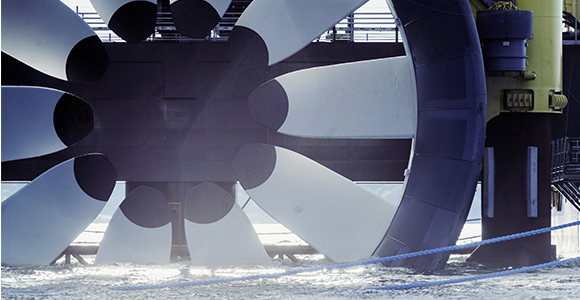Power & Utilities Conference 2023 Key Takeaways
By: John Kroeker, Linda Ezergailis, Sean Steuart, John Mould, John Miller
Jun. 14, 2023 - 4 minutes
TD Securities was delighted to host our 11th annual Power & Utilities Conference and were gratified to see a record level of attendance and enthusiasm for the in-person conference from both our corporate and institutional investing clients. The sentiment for electrification and need for clean energy has never been greater, while recent government incentives both north and south of the border highlight the importance of the Power & Utilities sector to our collective Energy Transition goals. On behalf of the entire TD Securities team, a big thank you to all the participants for another successful TD Power & Utilities Conference.
John Kroeker, Managing Director, Global Energy, Power & Utilities Group, Investment Banking, TD Securities
This spring, TD Securities hosted its 11th annual Power & Utilities Conference in Toronto.
The event included fireside discussions with management teams from across the sector. Presenters articulated an evolving growth opportunity set. In some cases, this set is impacted by rising capital costs – both higher costs of equity/debt and equipment inflation for non-regulated developers. In many cases, this required a more creative approach to funding.
Long term structural tailwinds are intact featuring widespread decarbonization targets at corporate, municipal, state/provincial, and federal levels and a continued focus on energy security.
For renewable independent power producers (IPPs), there were a few recurring themes:
- More creative approaches to funding growth.
- Increased focus on Canada for organic development opportunities.
- Stabilizing project economics, augmented by a robust corporate PPA environment and ongoing subsidization via tax credits in North America. Valuation pressure and higher borrowing costs have yielded lower return premiums and led to accessing a broader array of funding sources, including asset recycling initiatives.
Key Utility Themes
Utility companies continue to explore investment opportunities related to energy transition and electrification driven by decarbonization goals. While there is some additional clarity on how to proceed with adding projects to achieve these goals, further certainty about government policy and regulation is pending in several jurisdictions. Some cost inflation has been seen to-date, although the expectation is that the regulatory compact will continue to allow companies to recover prudently incurred expenses from customers over time, including a higher cost of capital.
In a higher interest rate and inflationary environment, utility companies continue to target solid credit metrics to ensure sufficient financial flexibility. Customer affordability and grid reliability remain top priorities, in addition to Indigenous community involvement when considering new growth projects.
Keynote Speaker — John Miller
The keynote speech this year was given by John Miller, Managing Director with TD Cowen's Washington Research Group (WRG). His wide range of expertise encompasses energy policy, including U.S. support for renewable power development. The U.S. is a focus growth market for many companies in our coverage universe, with expansion efforts motivated by robust tax credit extensions included in the Inflation Reduction Act (IRA). In addition, the majority of earnings by a few utilities in TD Cowen's coverage are generated from utility operations in the USA. His presentation covered a lot of ground.
- IRA tax credits: Mr. Miller sees limited chance that any facets of the IRA pertaining to renewable power will be compromised. He believes that tax credits – the heart of this legislation for the sector – will be the pathway forward for U.S. decarbonization and energy transition for the next decade. These include investment tax credits for renewable power/storage technologies and production tax credits primarily focused on wind projects. There is also optimism that eventual one-time transferability of tax credits will help simplify financing structures for new projects.
- Domestic U.S. solar components: The current U.S. approach to domestic solar industry support is expected to be more resilient and effective than previous iterations. Legacy protectionist initiatives revolved around countervailing and anti-dumping duties on component imports from China. This resulted in a "whack-a-mole" outcome where components were shifted between countries in Asia before being shipped to the U.S. to circumvent duties. The current approach combines IRA tax credits/domestic content provisions with broader trade restrictions related to the Uygur Forced Labor Prevention Act (UFLPA). This is expected to result in an increased share of U.S. solar components being sourced domestically over the mid-term. The initial impact is expected to yield component cost inflation; at this point, the magnitude and duration are difficult to estimate.
- Choose your battles: Broad bi-partisan support for renewable power growth is elusive but Mr. Miller indicated consensus interest in advancing energy infrastructure, permitting reform. His view is that realizing the full benefits from the IRA decarbonization efforts will be difficult without transmission permitting reform.
Material prepared by the TD Cowen Washington Research Group is intended as commentary on political, economic, or market conditions and is not intended as a research report as defined by applicable regulation.
Subscribing clients can view the full report on our Market Alpha portal














